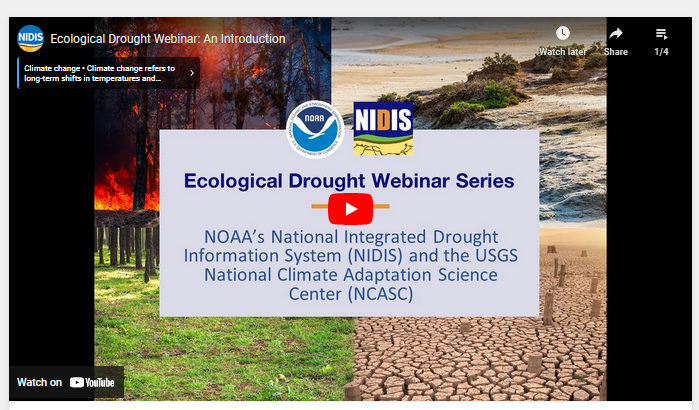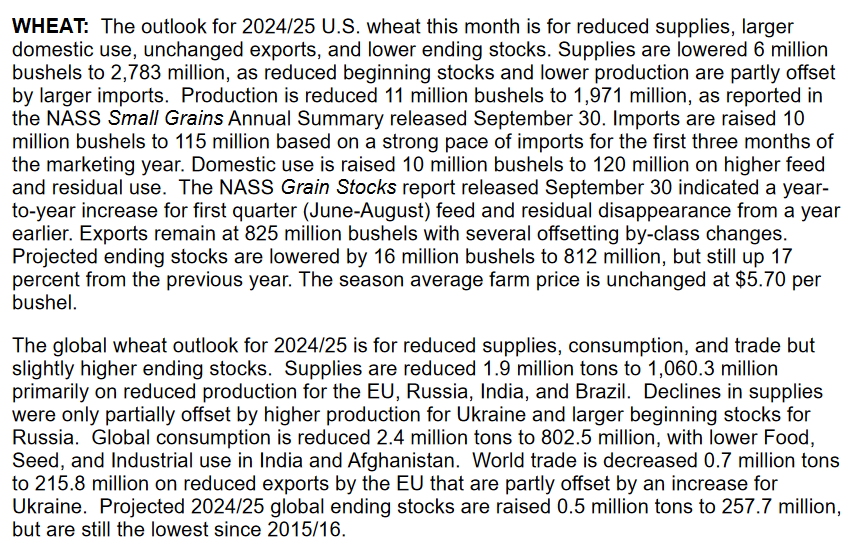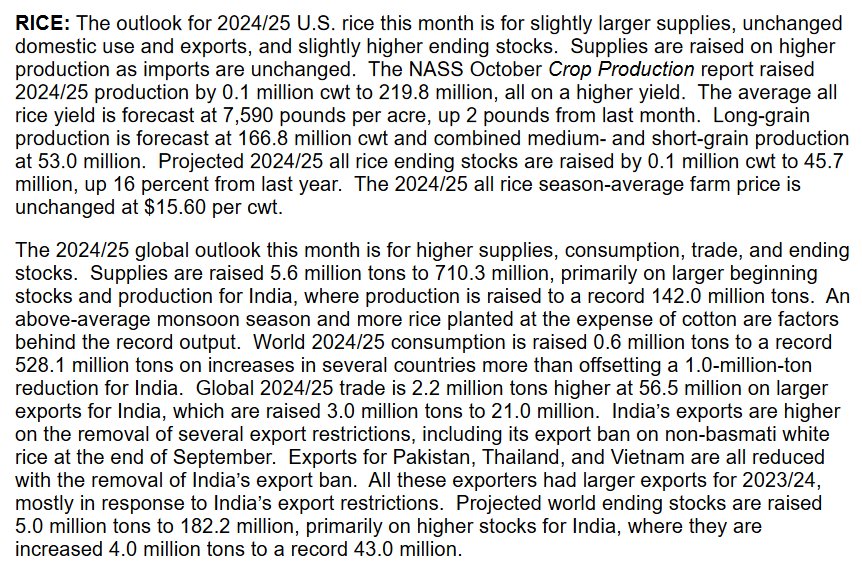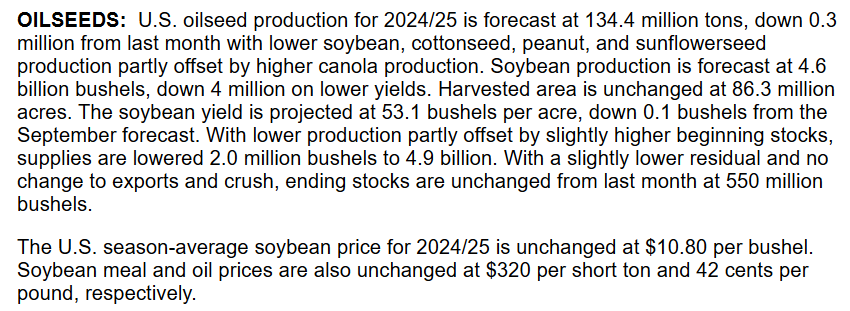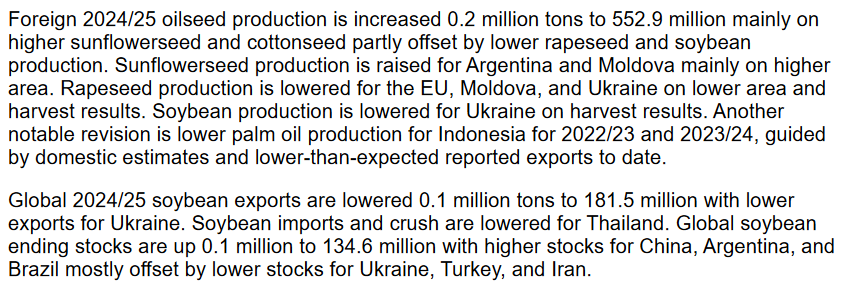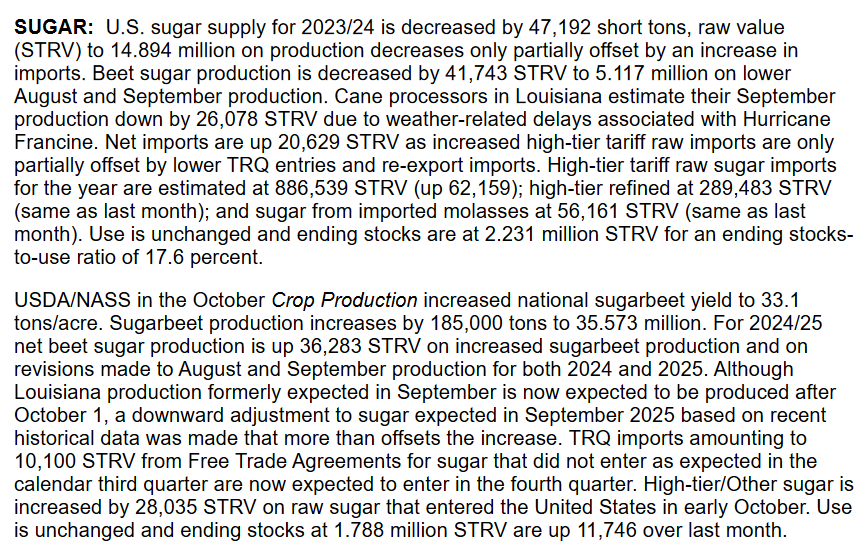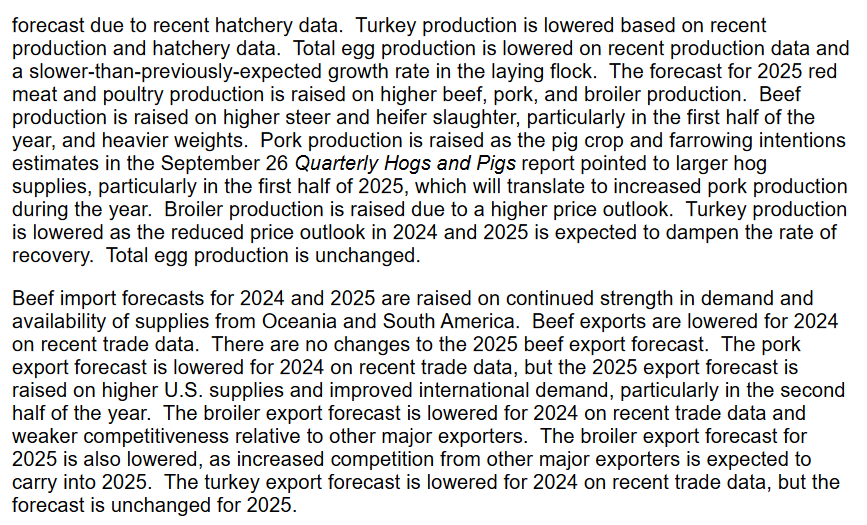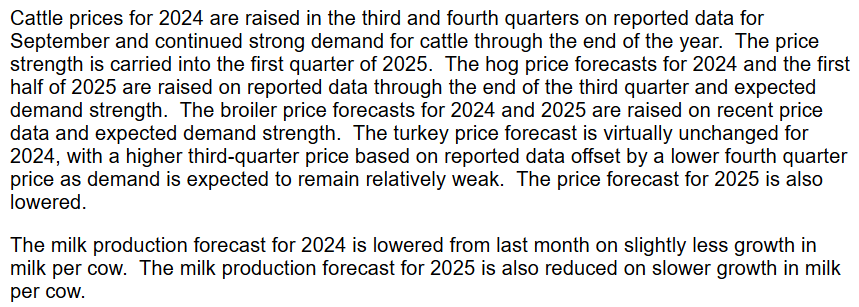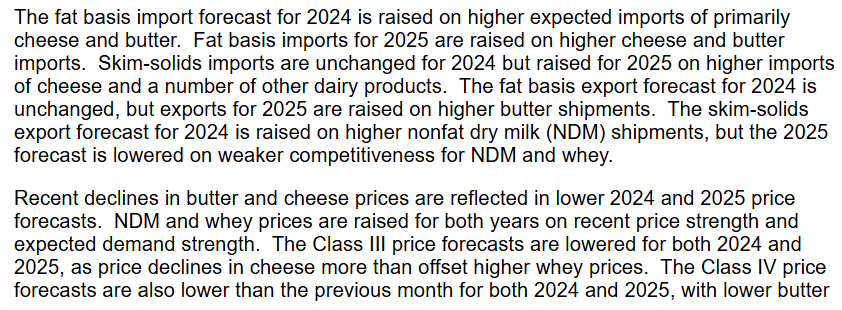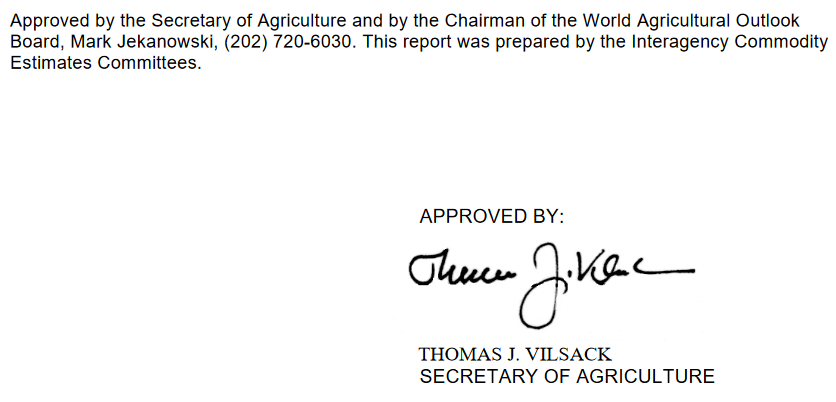On the third Thursday of the month right on schedule NOAA issued their updated Seasonal Outlook which I describe as their Four-Season Outlook because it extends a bit more than one year into the future. The information released also included the Mid-Month Outlook for the following month plus the weather and drought outlook for the next three months. I present the information issued by NOAA and try to add context to it. It is quite a challenge for NOAA to address the subsequent month, the subsequent three-month period as well as the twelve successive three-month periods for a year or a bit more.
With respect to the long-term part of the Outlook which I call the Four-Season Outlook, the timing of the transition from Neutral to LaNina has been challenging to predict. We are still in ENSO Neutral. La Nina is the likely scenario soon, but the strength of the La Nina may be fairly weak..
From the NOAA discussion:
“El Niño Southern Oscillation (ENSO)-neutral conditions remain present, as equatorial sea surface temperatures (SSTs) are near-to-below average in the central and eastern Pacific Ocean. A La Niña Watch remains in effect, with La Niña favored to emerge during September-November (SON) 2024 [Author’s Note: We are halfway through that period and still not in La Nina] (60% chance) [and is forecast to persist through January-March (JFM) 2025. Any La Niña event that develops this autumn is favored, however, to be a weak short duration event.”
I personally would not have total confidence in this outlook given the uncertainty about there actually being a La Nina and its strength if it does happen. I do not have the JAMSTEC outlook yet but for sure they will lean towards a weak La Nina with Modoki characteristics. I do not have a lot of confidence that NOAA knows how to deal with a La Nina Modoki. The number of El Nino and La Nina events since 1950 is a fairly small number. When you further segment them by strength you end up with a very small number of events in each category (El Nino v La Nina and three or four categories of strength within each of perhaps 8 to 10 subcategories. This makes both statistical methods and dynamical models have a large error range. We are pretty confident now that we will have either a weak La Nina or Neutral with a La Nina bias meaning it will be in the Neutral Range but closer to a La Nina than an El Nino. This suggests that there is value in this forecast. The maps show the level of confidence that NOAA (really the NOAA Climate Prediction Center) has for the outlook shown when they show a part of the U.S. or Alaska differing from Normal.
BTW as aside, the NOAA discussion was written this month by my two favorite NOAA Meteorologists.
Let’s Take a Look at the (mid-month) Outlook for November
![]()
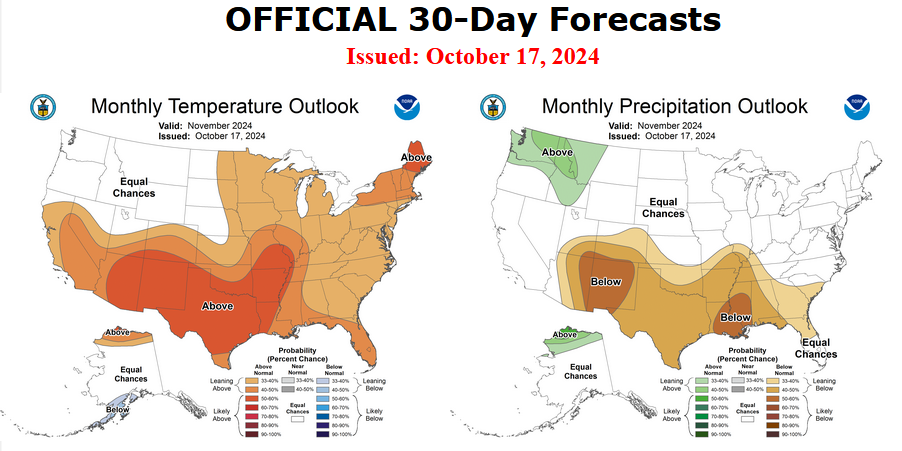
It will be updated on the last day of October.
Then we look at a graphic that shows both the next month and the next three months.
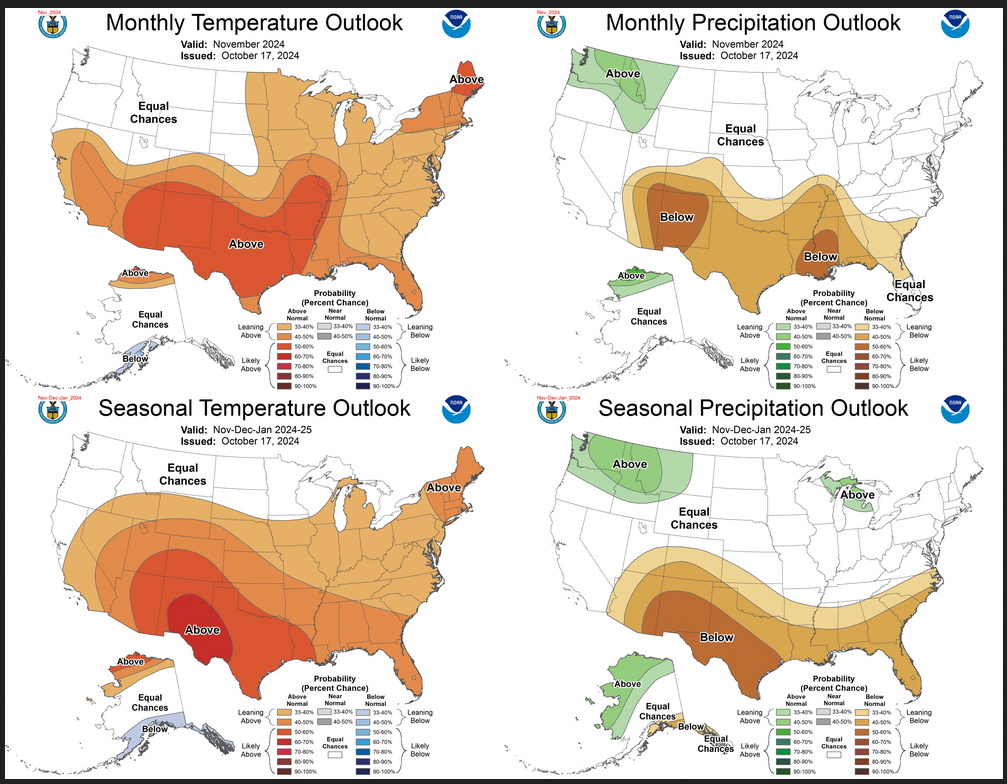
![]() The top row is what is now called the Mid-Month Outlook for next month which will be updated at the end of this month. There is a temperature map and a precipitation map. The second row is a three-month outlook that includes next month. I think the outlook maps are self-explanatory. What is important to remember is that they show deviations from the current definition of normal which is the period 1991 through 2020. So this is not a forecast of the absolute value of temperature or precipitation but the change from what is defined as normal or to use the technical term “climatology”.
The top row is what is now called the Mid-Month Outlook for next month which will be updated at the end of this month. There is a temperature map and a precipitation map. The second row is a three-month outlook that includes next month. I think the outlook maps are self-explanatory. What is important to remember is that they show deviations from the current definition of normal which is the period 1991 through 2020. So this is not a forecast of the absolute value of temperature or precipitation but the change from what is defined as normal or to use the technical term “climatology”.
| Notice that the Outlook for next month and the three-month Outlook are fairly similar. This tells us that December and January will be substantially the same as November for most of CONUS and Alaska. Part of the explanation for this is that NOAA expects La Nina to impact all three months. |
–

The full NOAA Seasonal Outlook extends through November/December/January of 2026 (yes that is more than a year out). All of these maps are in the body of the article. Large maps are provided for November and the three-month period November/December/January Small maps are provided beyond that through November/December/January of 2026 with a link to get larger versions of these maps. NOAA provides a discussion to support the maps. It is included in the body of this article.
In some cases, one will need to click on “read more” to read the full article. For those on my email list where I have sent the url of the article, that will not be necessary.


